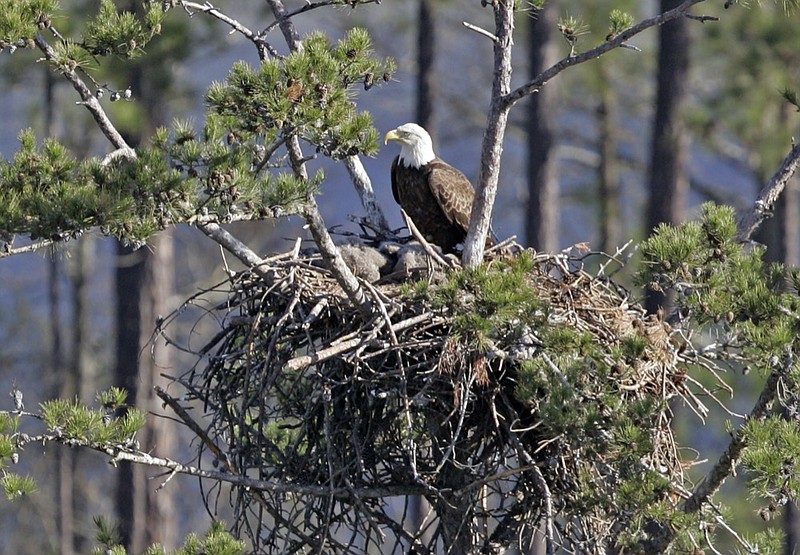According to Georgia's first statewide survey of bald eagle nests in five years, America's national bird is nesting in the Peach State in record numbers.
Nests around the state fledged 227 eagles, according to the Georgia Department of Natural Resources, roughly 1.6 birds per nest. That's a slight increase over the 2017 average.
In Georgia, bald eagles are classified as a threatened species.
(READ MORE: Catoosa County, Georgia, residents look to future of existing hospital campus)
Survey flights this winter and spring counted 229 nest territories. The record in 2017 was 218, according to survey leader Bob Sargent.
However, there was some less-positive news looming over the study. The eagle population has been fighting its own pandemic recently - bird flu.
The highly pathogenic avian influenza virus has taken a toll on eagle habitats across the coast, including Georgia. Nest success dropped about 30% this year.
(READ MORE: Catoosa resident files lawsuit after he was kicked out of commission meeting)
But Sargent said there is still reason to be optimistic.
"It's important to remember that the bald eagle population has exhibited a remarkable rebound in the last 50 years," he said. "And although the coastal nests took a hit from the virus, the more than 150 nests elsewhere in the state experienced normal productivity."
Overall, Georgia's eagle turnaround has been a story of success.
(READ MORE: New Whitfield County Civil War park offers recreation, digital features)
"Following a steep decline in the eagle population in Georgia, the state went from no known successful nests throughout most of the 1970s to one in 1981, 47 by the turn of the century and more than 200 occupied nest territories today - about 75 percent of which are usually successful," the Department of Natural Resources wrote in a recent press release.
